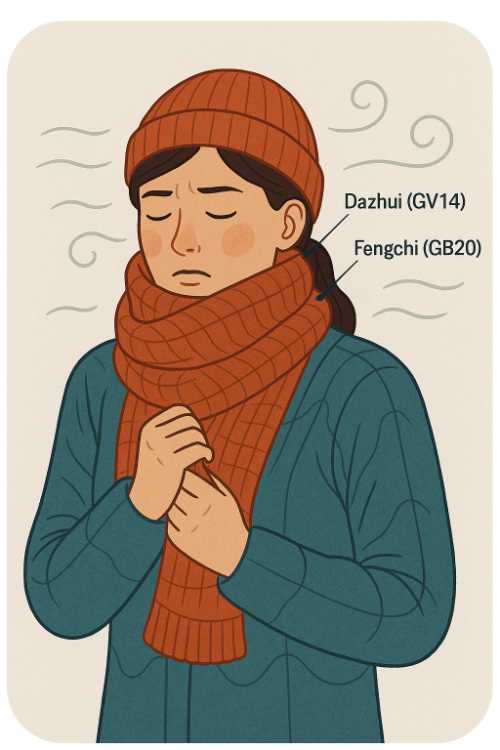East vs. West:
How Cancer is Viewed and Treated
When it comes to cancer, East and West often seem worlds apart in how they view the body, disease, and treatment. But with growing interest in integrative care, many people are looking at both perspectives—not as opposites, but as complementary approaches that can support healing and quality of life.
How TCM Can Support Cancer Care
Traditional Chinese Medicine is not a substitute for surgery, chemotherapy, or radiation—but it can be a powerful ally. Here are some of the ways TCM is commonly used alongside Western cancer treatments:
• Reducing Side Effects: Acupuncture and herbal formulas may help relieve nausea, fatigue, dry mouth, neuropathy, and pain associated with chemo or radiation.
• Supporting Digestion and Appetite: Many patients lose interest in food during treatment. TCM views the Spleen and Stomach as central to energy production and offers targeted support.
• Calming the Spirit: Emotional strain is often overlooked. Acupuncture, meditation, and gentle qigong can help reduce anxiety and improve sleep.
• Promoting Recovery: Herbal tonics and rest-based yangsheng (nourishing life) practices may support immune function and long-term healing.
Always work with qualified practitioners and let your oncology team know about any herbs or supplements you're taking.
Cancer remains one of the most common and challenging diseases in the United States. According to the American Cancer Society, about 2 million new cancer cases are expected to be diagnosed in 2025, and more than 600,000 people will die from the disease. Thanks to advances in early detection and treatment, many cancers—such as certain types of breast, prostate, and skin cancer—are now highly treatable. Yet others, like pancreatic or late-stage lung cancer, still carry poor survival rates. Continued research is essential, but funding is often uncertain. In recent years, some national programs have faced budget cuts, threatening the progress made in prevention, treatment innovations, and patient support systems. This highlights the need for a broad, well-supported approach to care—one that includes both cutting-edge science and whole-person healing traditions like TCM.
In Western medicine, cancer is usually understood as a cellular disease. Diagnosis relies on imaging and lab tests to locate tumors and classify their type and stage. Treatments like surgery, chemotherapy, and radiation are aimed directly at destroying or removing the cancerous cells. While often effective, these treatments can be physically and emotionally exhausting. Side effects like fatigue, nausea, poor appetite, and anxiety are common, and recovery may be slow.
Traditional Chinese Medicine (TCM), by contrast, doesn't focus on cancer as a single “thing” to be cut out or destroyed. Instead, it sees cancer as a manifestation of deeper imbalances in the body’s internal environment. A practitioner may look at factors like Qi stagnation, phlegm accumulation, blood stasis, and organ system disharmony. These aren't just poetic terms—they reflect centuries of careful clinical observation and a different but coherent framework for understanding illness.
Importantly, most TCM practitioners do not claim to “cure” cancer, especially in its later stages. Instead, they aim to support the body through treatment, relieve symptoms, improve energy, regulate digestion, reduce pain, and calm the emotions. Acupuncture, herbal formulas, dietary adjustments, and Qigong exercises can all play a role. In many hospitals in China, TCM and Western medicine are used side by side.
This integrative approach is gaining traction in the West, too. More cancer centers now include acupuncture for nausea or pain, recommend meditation or Qigong for stress, and even refer patients to trained herbalists—provided there’s no interference with medications. These are not magical cures. But they can improve resilience, support the immune system, and help patients feel more in control of their healing process.
In the end, combining East and West may offer the best of both worlds: the precision and power of modern medicine, and the deep, whole-person wisdom of traditional healing.
Vocabulary Guide:
- Qi (气) – Vital energy or life force that flows through the body along meridians.
- Blood stasis (瘀血 yūxuè) – A pattern in TCM where blood circulation is impaired, often linked to pain or masses.
- Phlegm (痰 tán) – Not just mucus; in TCM, it refers to damp, turbid accumulations that can block normal function.
- Organ system – In TCM, organs are part of functional networks (like Liver or Spleen) with broader meanings than in Western anatomy.
- Qigong (气功) – Gentle, mindful movement and breath exercises used to regulate qi and promote health.




